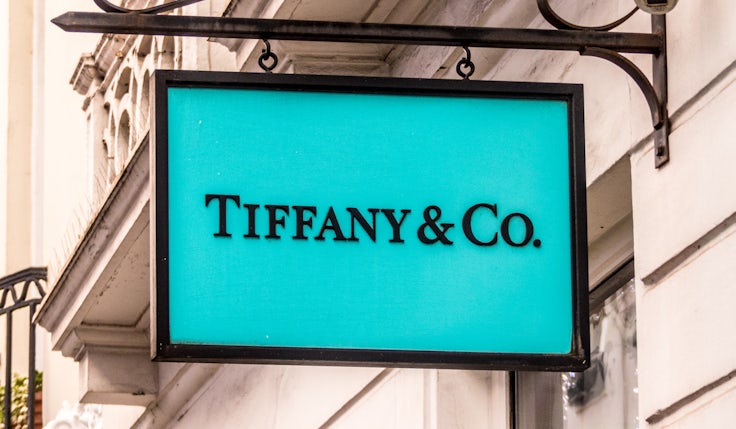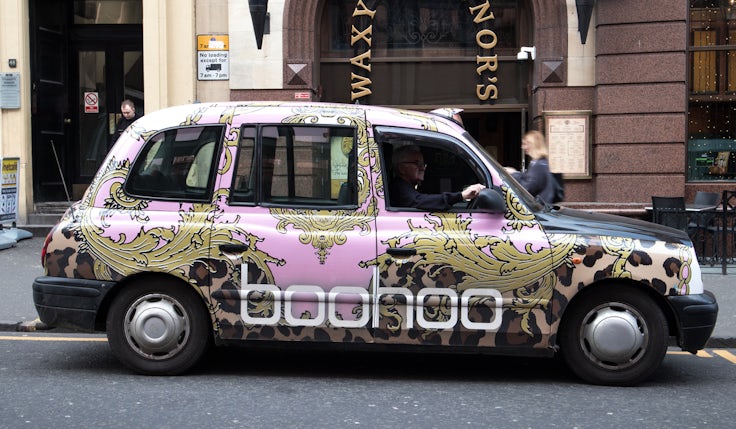Fashion brands need to be prepared for a gender-fluid future
Gender-fluid fashion is reaching a cultural apex so mainstream fashion brands looking to capitalise on its growing popularity need to be prepared to speak about it authentically – and with confidence.
 There are few higher honours in the fashion world than being given the chance to close out Paris Fashion Week, the official end of fashion month and its most high-profile spring/summer 2024 show.
There are few higher honours in the fashion world than being given the chance to close out Paris Fashion Week, the official end of fashion month and its most high-profile spring/summer 2024 show.
Today (3 October), it falls to Duran Lantink to close out proceedings, renowned for his gender-fluid fashion and famed for his fantastical vagina pants, wore by Janelle Monae in her PYNK music video, and currently on display in the V&A as part of its Diva exhibition.
The choice of Lantink to wrap up the season sends a clear message: the future of fashion is gender-fluid.
While so-called unisex fashion isn’t new – think of Bowie’s Ziggy Stardust persona in the 70s, avant-garde Japanese designers like Yohji Yamamoto in the 80s, or the gender-neutral adoption of streetwear by female artists such as Missy Elliot in the 90s – the immense opportunity that brands face is recent.
‘Break the chain’: Why Esprit is investing in brand-building for the first time in 25 yearsIndustry projections suggest the global market for unisex or genderless fashion will grow by 4.5% annually, reaching $3.2bn by 2028. Meanwhile, data collected in a survey last summer by Klarna found that as many as 36% of American consumers had purchased fashion outside of their gender identity, followed by Sweden with 33% and the United Kingdom with 31% (with those figures rising steeply among Gen Z respondents).
Mainstream fashion brands, then, have an opportunity to capitalise on this impressive opportunity. Structural issues like merchandising infrastructures and product development processes – set up originally along entirely binary lines – notwithstanding.
I recently chatted with fashion editors, CMOs and industry commentators about how marketing and communications can help guide established brands as they seek to sync with evolving cultural norms – and avoid accusations of jumping on the bandwagon or gender washing.
Don’t be neutral
Right now, there’s a lot of interchange between the terms ‘gender-neutral’, ‘unisex’, ‘genderless’ and ‘gender-fluid’ regarding how fashion brands communicate.
While unisex feels quite dated, the term genderless suggests, in my mind, a means of streamlining production. Gender-neutral meanwhile conjures up images of clothing officially devoid of gender expression but, in reality, just ‘masculine by default’ – think baggy trousers and oversized shirts – with the femininity that exists within the notion of true gender neutrality sadly lost.
Transgender campaigner for common ground, Katy Jon Went, agrees: “Gender-neutral fashion is former communist bloc-bland/Star Trek androgyny. Women wearing menswear is just feminism, but men wearing womenswear should be too. Not only the pop stars, they/thems and Eurovision camp crooners.”
M&S signs Sienna Miller as it admits boosting style perceptions is its ‘biggest barrier to growth’Jess Cartner-Morley, fashion editor at The Guardian, understands where the tendency to default to a masculine silhouette originates from but looks forward to a time where greater balance is embraced. “Part of the reason so-called gender-neutral fashion skews to the male silhouette is a result of the broader move to casualisation – men’s clothes have typically just been more comfortable to wear,” she says. “But it will be real silent progress when we see more Harry Styles-type gender-fluid dressing, as that says something very cheering about gender.”
Put this way, it becomes apparent that brands should lean into talking about ‘gender-fluid’ fashion and ditch the beige language of gender-neutral or unisex terminology in their marketing communications.
Co-creation is king (or queen)
Any gender-fluid line or range’s success also closely tracks to how involved your target audience has been in its creation. Mindful that defining trends top-down will always fall flat, fashion brands need to find ways and means to truly get into the mindset of their community and take their cues from it.
This is where customer focus groups can help brands hone their understanding of what gender-fluid products their existing customers want to see.
Understand what your community needs and wants – and create clothes that answer that need. And only then engage in marketing, appropriately.
Priya Matadeen, Ganni
Take, for example, Ganni’s recent sneaker collab with New Balance and the resulting 1906R shoe – described by GQ magazine recently as “a women’s brand that’s so good at men’s sneakers”. Its chief brand officer Priya Matadeen notes how Ganni “regularly invites our community in” to hear from them about what authenticity in the gender-neutral space looks like.
She adds: “I think the New Balance launch was a great example of this, working with a partner who moves in the space with ease to create a product that feels truly gender neutral.”
Four key elements characterise a successful approach to ’cause-infused’ marketingIn this Ganni example, a cult womenswear brand partnered with a behemoth from a reasonably degendered category: sneakers. The flipside can also be an incredibly beneficial way for more established brands wanting to test gender-fluid products, collabs that enable them to learn from smaller brands who have proven experience catering to customers across gender lines.
Calvin Klein’s partnership with hip London-based skateboarding and clothing brand Palace last summer is one example of this, with the resulting capsule collection, called CK1 PALACE, cleverly and authentically leveraging Klein’s historic launch of the world’s first gender-neutral fragrance back in the day.
It doesn’t stop with Gender Z
With Gen Z openly embracing fashion that doesn’t define them by their gender, and the fact they, of course, will soon become the largest cohort of consumers globally, it’s all too easy to forget that gender-fluid dressing actually appeals to a broad swathe of people.
A survey in the US last year, for example, revealed that while 85% of Gen Z respondents expressed interest in shopping more gender-neutrally in future, so, too, did over 60% of Gen X respondents. Remember, even before gender-fluid fashion became a thing, brands like Vans and Converse were selling the same type of shoes to consumers regardless of gender.
It will be real silent progress when we see more Harry Styles-type gender-fluid dressing, as that says something very cheering about gender.
Jess Cartner-Morley, The Guardian
It’s also true that Gen X consumers may be surrounded by children or younger Gen Z family members, with the latter influencing their older family members’ preferences in subtle ways. Meanwhile, the noticeable overlap between modern gender-inclusive clothing and ethical, more sustainable brands is another way in which older shoppers may find themselves being drawn into less binary fashion options.
Ganni, whose target audience spans Gen Z and millennials, is a firm favourite among a growing community of younger and older non-binary people who, Matadeen says, enjoy the products because they are made to simply make you feel confident however you identify. “Within Ganni the people in our communities define femininity in a multitude of ways, but the one thing they have in common is they are all people that believe in power and equality,” she notes.
Collaboration culture: Why brands are teaming up to stand outAt the end of the day, an article of clothing should be for anyone who wants to wear it. Yes, society, with its cultural mores and social stereotypes, means we still have some way to go to give meaning to this statement. But the first step is taking the time and space to discover what your audience truly desires.
As Matadeen concludes: “Understand what your community needs and wants – and create clothes that answer that need. And only then engage in marketing, appropriately.”







